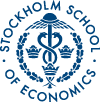No 598: Forecasting economic variables with nonlinear models
Timo Teräsvirta ()
Additional contact information
Timo Teräsvirta: Dept. of Economic Statistics, Stockholm School of Economics, Postal: Stockholm School of Economics, P.O. Box 6501, SE-113 83 Stockholm, Sweden
Abstract: This article is concerned with forecasting from nonlinear conditional mean models. First, a number of often applied nonlinear conditional mean models are introduced and their main properties discussed. The next section is devoted to techniques of building nonlinear models. Ways of computing multi-step ahead forecasts from nonlinear models are surveyed. Tests of forecast accuracy in the case where the models generating the forecasts are nested are discussed. There is a numerical example, showing that even when a stationary nonlinear process generates the observations, future obervations may in some situations be better forecast by a linear model with a unit root. Finally, some empirical studies that compare forecasts from linear and nonlinear models are discussed.
Keywords: Forecast accuracy; forecast comparison; hidden Markov model; neural network; nonlinear modelling; recursive forecast; smooth transition regression; switching regression
55 pages, First version: May 31, 2005. Revised: December 29, 2005.
Note: This paper has been prepared for Graham Elliott, Clive W.J. Granger and Allan Timmermann (eds.). Handbook of Economic Forecasting. Amsterdam: Elsevier. This version replaces the previous faulty one (references missing).
Full text files
hastef0598.pdfFull text
Questions (including download problems) about the papers in this series should be directed to Helena Lundin ()
Report other problems with accessing this service to Sune Karlsson ().
RePEc:hhs:hastef:0598This page generated on 2024-09-13 22:19:41.

